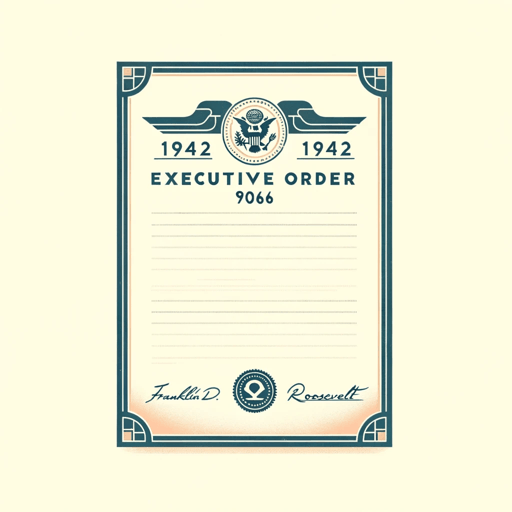10 pages • 20 minutes read
Franklin Delano RooseveltExecutive Order 9066
Nonfiction | Essay / Speech | Adult | Published in 1942A modern alternative to SparkNotes and CliffsNotes, SuperSummary offers high-quality Study Guides with detailed chapter summaries and analysis of major themes, characters, and more.
Background
Sociohistorical Context: Japanese Immigration to the United States
For several centuries, Japan maintained an official policy of isolation toward Europe and the Western world. This began to change when, in 1853, the United States Navy commander Matthew Perry arrived in Japan to effect a treaty that opened the country to trade with the US. Many Japanese became intrigued by America as an alien culture and a symbol of freedom and opportunity.
Following the Meiji Restoration in 1868, Japan’s rapid urbanization and industrialization had a negative impact on Japanese farmers and impelled many of them to immigrate to the United States to seek a better life. Japanese immigrants settled both in Hawaii and on the West Coast of the US, often working on the railroads or on farms as contract laborers. Many eventually stayed to establish their own farms and orchards, open up shops, or operate small businesses, settling in ethnic communities and enclaves especially in California, Oregon, and Washington State.
Although highly successful, Japanese immigrants encountered a number of barriers in their new homeland, including social prejudice and legal restrictions. Some state legislatures restricted foreign-born residents from owning land, and US immigration at that time did not allow immigrants born in Japan to become citizens. In addition, resentment built up among white Americans toward Japanese immigrants who were taking, and succeeding in, jobs traditionally held by the native-born.


